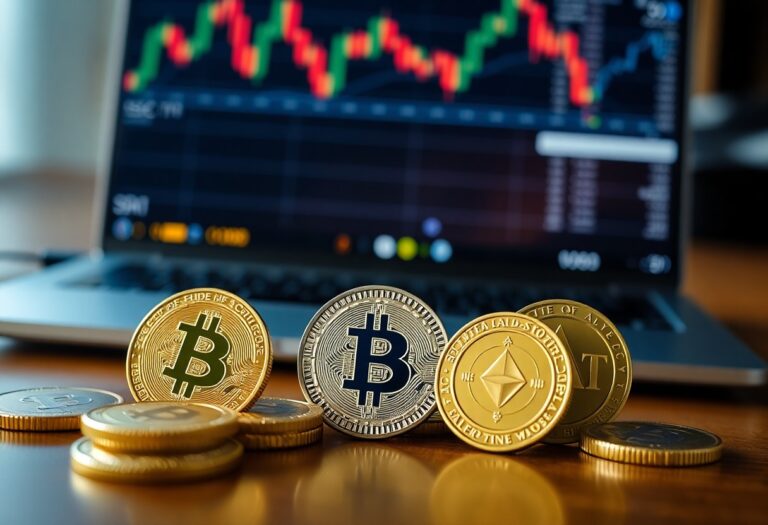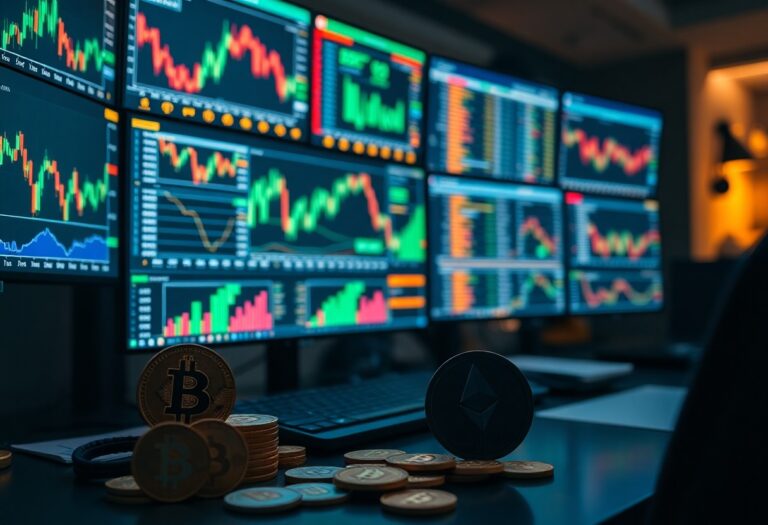What Are NFTs and How Do They Work?
Blockchain technology forms the backbone of Non-Fungible Tokens (NFTs), digital assets that represent ownership of unique items or content. As you explore NFTs, you will discover their potential for creativity and investment, along with the risks of fraud and market volatility. Understanding how these assets function can empower you to navigate the growing digital marketplace effectively, whether you’re looking to buy, sell, or create your own NFTs.
Understanding NFTs
While non-fungible tokens (NFTs) have gained immense popularity, understanding their core mechanics is crucial for navigating the digital landscape. NFTs are unique digital assets verified by blockchain technology, allowing you to own, buy, sell, and trade digital content in a verifiable manner, distinguishing them from traditional, fungible assets.
Definition of NFTs
Below is a brief definition of NFTs: NFTs are digital tokens representing ownership of a unique item or piece of content, verified through smart contracts on a blockchain, ensuring authenticity and scarcity.
Types of NFTs
Below are various types of NFTs:
- Art
- Collectibles
- Music
- Gaming Items
- Virtual Real Estate
After exploring these types, you can see how NFTs enable creativity and ownership.
| NFT Type | Examples |
| Art | Digital paintings, illustrations |
| Collectibles | Rare trading cards, virtual pets |
| Music | Album releases, exclusive tracks |
| Gaming Items | Skins, weapons, characters |
| Virtual Real Estate | Land in digital worlds |
Considering the types of NFTs, their impact on various industries is significant.
- Artistic expression is revolutionized by NFTs.
- Collecting now transcends physical boundaries.
- Monetization opportunities for artists have expanded.
- Gamification in virtual spaces engages users.
- Investment potential draws new audiences.
After understanding these types, you can appreciate the new opportunities in the digital economy.
| Type | Benefits |
| Art | Empowers artists directly |
| Collectibles | Fosters community and ownership |
| Music | Direct fan interaction |
| Gaming Items | Enhances player engagement |
| Virtual Real Estate | Potential for high returns |
The Technology Behind NFTs
Assuming you understand the basics of digital assets, it’s necessary to research into the technology that powers NFTs. At the heart of NFTs is blockchain, a decentralized ledger technology that ensures transparency, security, and ownership verification. This infrastructure allows you to buy, sell, and trade unique digital assets without relying on intermediaries.
Blockchain Fundamentals
For NFTs, blockchain serves as the backbone that verifies ownership and transaction history. Each NFT is minted on a specific blockchain, like Ethereum, where its unique attributes are recorded in a digital ledger. This immutable nature guarantees that once you own an NFT, you can trust in its authenticity and your ownership rights.
Smart Contracts
One of the key components of NFTs is their integration with smart contracts, which are self-executing agreements coded into the blockchain. These contracts automate processes such as transferring ownership and ensuring creators receive royalties from secondary sales.
In addition, smart contracts can include various stipulations to protect both you and the creator. For example, they can automatically distribute royalties to artists every time their NFT is resold, fostering a sustainable ecosystem. However, if improperly coded, they can also pose security risks like vulnerability to hacks. Understanding how smart contracts function is vital for navigating the NFT space safely.
Buying and Selling NFTs
The process of buying and selling NFTs involves using cryptocurrency to purchase digital assets on various platforms, where you can place bids or buy items at a set price. Once purchased, you own the digital asset, which can be resold in secondary markets, potentially at a profit.
NFT Marketplaces
Above all, NFT marketplaces like OpenSea, Rarible, and Foundation serve as key platforms for buying and selling NFTs. Here, you can explore various collections, engage with creators, and participate in auctions, giving you access to a vibrant ecosystem of digital art and collectibles.
Wallets and Transactions
NFTs require digital wallets to facilitate transactions, allowing you to store and manage your cryptocurrencies securely. Choosing a reputable wallet is crucial, as it helps protect your assets from hacks or theft. Ensure your wallet supports the specific blockchain of your NFTs, and be prepared to handle transaction fees, which vary depending on network activity.
Considering the growing popularity of NFTs, it’s imperative to monitor your wallets closely. Always use two-factor authentication and keep your wallet’s private keys secure. If you engage in transactions, verify the authenticity of the NFTs and their associated platforms to avoid potential scams. Understanding these aspects will enhance your trading experience and safeguard your investments.
Use Cases of NFTs
Not limited to digital art, NFTs have a wide array of applications across various industries, revolutionizing how you view ownership and authenticity. From music to gaming, they offer unique digital experiences, enabling you to own and trade assets in previously unimaginable ways.
Digital Art and Collectibles
Around the world, artists are leveraging NFTs to sell their work directly to collectors, eliminating the need for intermediaries. This shift allows you to purchase unique pieces and ensures the artist receives proper royalties from future sales.
Gaming and Virtual Real Estate
About digital gaming, NFTs are transforming how you engage with virtual worlds and assets. You can buy, sell, and trade in-game items or virtual real estate, giving you true ownership of assets that can appreciate in value.
And as you explore gaming and virtual real estate, you’ll find that NFTs provide you with unparalleled ownership opportunities. Monetization is a key benefit, as many players now see in-game assets as an investment that can yield real-world returns. However, be cautious of the risks involved, such as market volatility and the potential for scams, which can put your assets in jeopardy. Engaging with these innovations can be rewarding, but it’s imperative to be informed and navigate carefully.
Legal and Regulatory Considerations
Many jurisdictions are still developing their legal frameworks surrounding NFTs, which means that the regulatory landscape is constantly evolving. You should stay informed about local laws, as compliance can impact the creation and sale of NFTs. Issues such as consumer protection, anti-money laundering, and tax obligations all require your attention when navigating this space.
Intellectual Property Rights
Considerations surrounding intellectual property rights are significant for NFT creators and buyers. You need to understand whether owning an NFT grants you copyright or related rights over the underlying content. Additionally, ensuring proper licensing and permissions can protect you from potential legal disputes.
Tax Implications
Regulatory attention is also focused on the tax implications associated with NFTs. You are required to report income generated from NFT sales and may be liable for capital gains taxes upon sale. The classification of NFTs may vary, so understanding how transactions are taxed in your jurisdiction is vital to remain compliant.
Indeed, the tax implications of NFTs can be intricate. You should be aware that transactions may be deemed taxable events, meaning that profits from NFT sales can incur capital gains tax. Additionally, if you are a creator, the income from initial sales may also be subject to ordinary income tax. Staying organized with your records and consulting a professional can help mitigate potential liabilities and ensure compliance with tax regulations.
Challenges and Future of NFTs
To navigate the evolving landscape of NFTs, you must consider the significant challenges they face, including environmental concerns, market volatility, and regulation. These issues could affect their long-term adoption and utility, making it important for you to stay informed about upcoming developments and potential solutions.
Environmental Concerns
Around the creation and trading of NFTs, there has been increasing scrutiny regarding their environmental impact, primarily due to the energy consumption associated with blockchain technology. As a result, many NFT projects are exploring more sustainable methods to significantly reduce their carbon footprints. You should keep an eye on these innovations as they emerge.
Market Volatility
On the NFT market, you may experience significant price fluctuations that can be both a risk and an opportunity. The hype surrounding new launches often leads to rapid increases in value, but these are frequently followed by steep declines, leaving your investments vulnerable.
To mitigate risks associated with market volatility, you should approach NFT investments with caution. Conduct thorough research and be prepared for rapid changes in value. Diversifying your portfolio and only investing what you can afford to lose will help shield you from the negative effects of sudden price drops, while also allowing you to capitalize on potential gains from trends and innovations in the NFT space.
Conclusion
Following this overview, you should have a clearer understanding of what NFTs are and how they function within the digital landscape. By leveraging blockchain technology, NFTs provide a means for you to own unique digital assets, whether they be art, music, or virtual real estate. As you explore this evolving space, consider the implications for your own digital ownership and investment strategies, as NFTs continue to shape the future of digital content and ownership.






